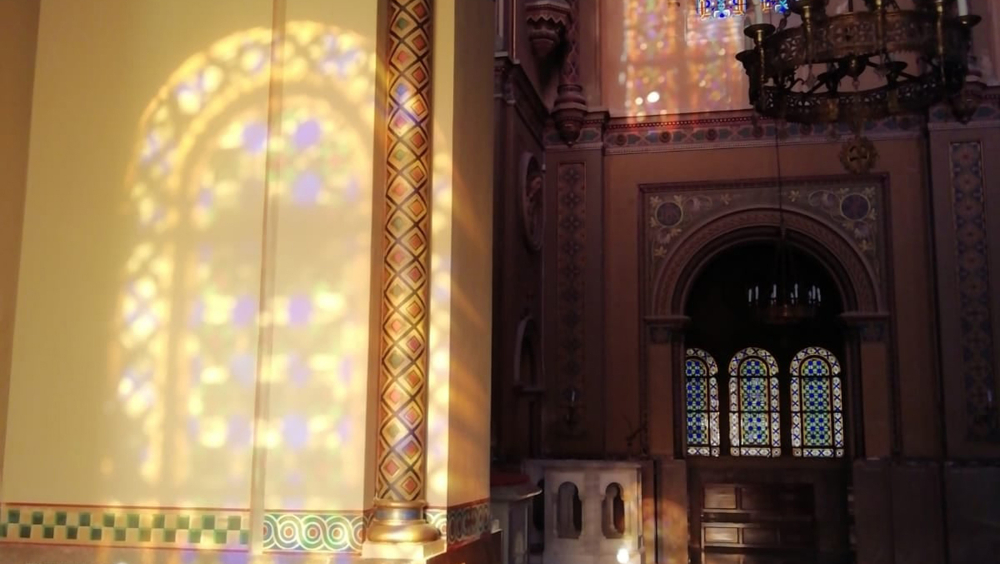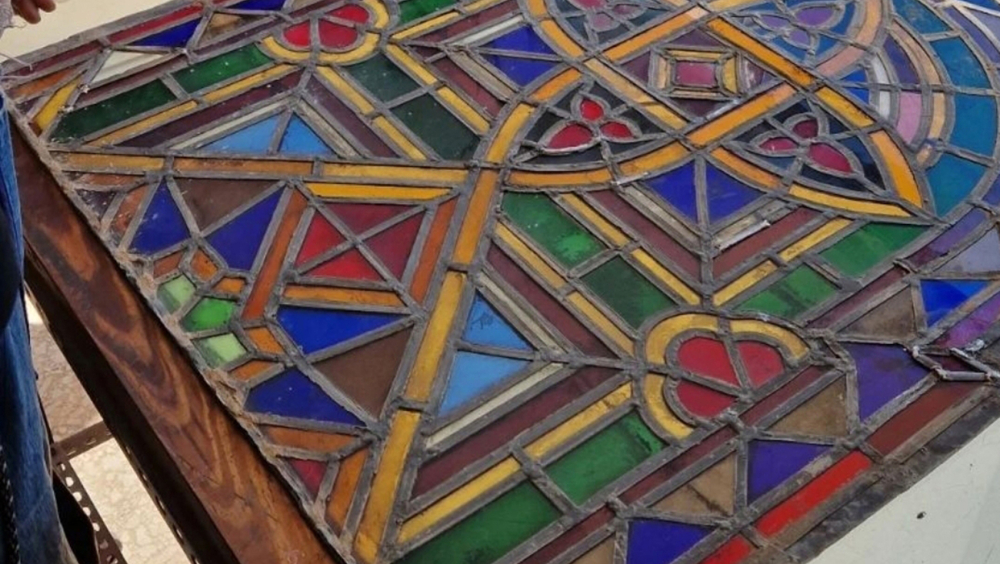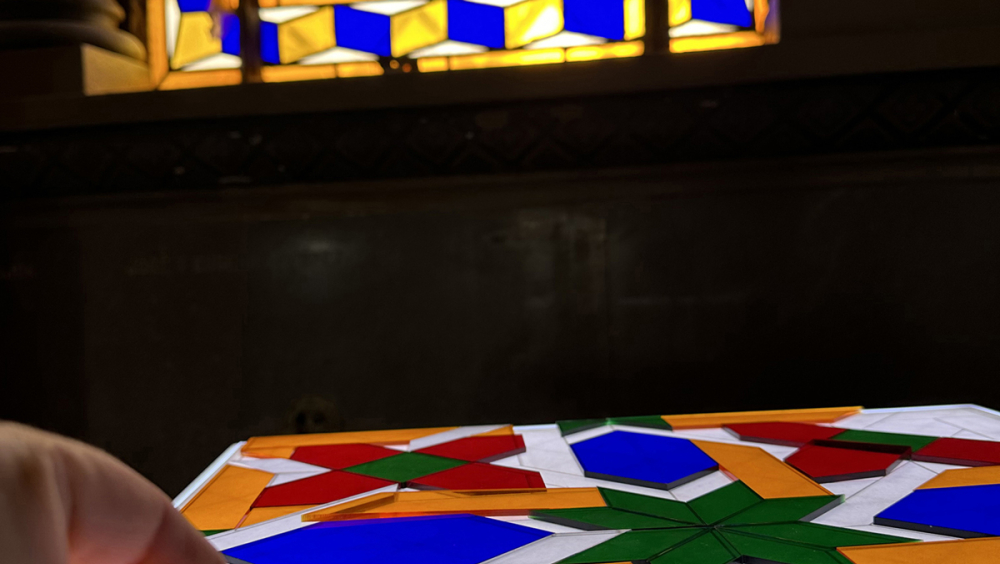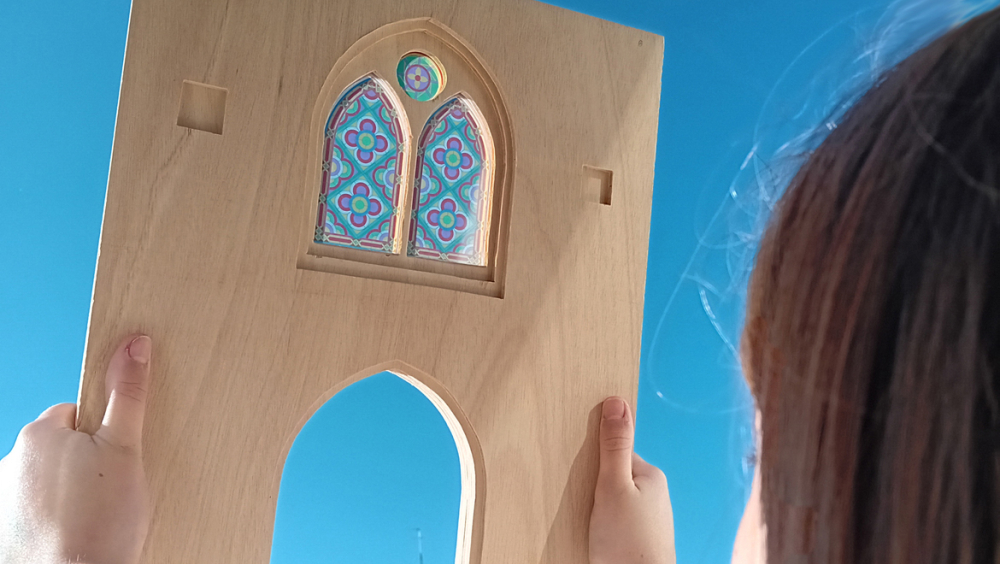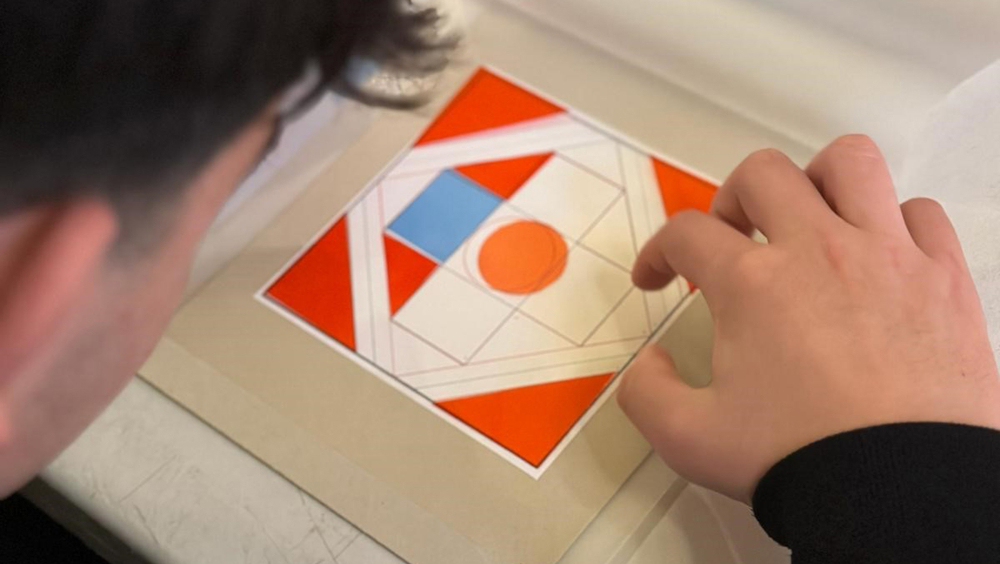The geometry of light. Teaching resources for all
The project of the Jesuit Church in Valencia is a work of community. It is not only about the restoration of the old chapel of the San José school in Valencia, but it is a set of actions where the artisans and professionals involved in the restoration process are the protagonists.
In recent years, various actions have been planned (some of them have been part of the European Heritage Days) that help to disseminate restoration: visits for neighbours, schoolchildren and cultural managers, professional talks on interventions in mural paintings, experimental excavation, invitations to illustrious students and audiovisual recording of collective memory... And with these actions, specific material has been created that remains in the building as a support to tell its story. All this makes the chapel the perfect setting to develop synergies between citizens and professionals, between new technologies and trades, between different cultures and generations, in short, it becomes a generator of heritage communities.
In this 2023-2024 phase, the intervention phase is being special. It focuses on an element that gives it the majesty for which a religious building like this stands out: the stained glass windows.
Light is part of an intangible heritage that is rarely so closely linked to tangible heritage. This period of work will allow us to enjoy and share it, creating innovative educational projects that are reformulating visits to a heritage building in the 21st century.
Our commitment to dissemination is inclusive, where all people (and autonomously) can learn about the construction systems of a unique construction such as a church or understand the work process to build the stained glass window.
In addition, the feedback provided by all the agents involved (local and international) will improve the experiences of heritage didactics.
The construction of the chapel of the ancien school of San José in Valencia began in the last decades of the nineteenth century. The neo-Byzantine style, and the construction system make this building a remarkable example of religious architecture across the region.
Over time it has undergone numerous modifications, always introducing new technical and aesthetic solutions, resulting in a work of great complexity.
The building needed intervention and architectural consolidation, and the planning was to propose a comprehensive heritage recovery by a team that works from various aspects: historical, social, architectural, cultural, integrative, religious, informative, cooperative...
The stained glass windows highlight among the architectural elements. Our building has the largest surface of stained glass windows in the entire Valencian Community (more than 700m2). The restoration of the stained glass windows is proving to be a very enriching process for both the technical team and the building and, above all, for all the citizens who come to learn more about the history and the process of creation and restoration of the large coloured panels.
On the part of the architectural intervention, it is a work that is carried out in phases, little by little, dedicating the time they deserve. For this reason, these periods between phases serve to become a work open to the public. In addition to the building, the technicians and the restoration professionals, a fundamental pillar are the citizens, the neighbourhood and the society that was part of the history of the old school, and with it, of its Church. The heritage community created around this restoration is aligned with the objectives of the Faro Convention.
In recent months, a new life cycle has been set in motion for the church. This heritage asset, traditionally for private use, adapts to the new times with an integrative, community and social vocation, becoming a space for the projection of multicultural events for citizens. Because times change, it is enough to look at these last two years to analyse how society has evolved, the ways of life, of relating to each other and, why not, the way we use buildings.
Religious monuments mark the history of our peoples, they are examples of splendour in the past, but they have also been centres of welcome and refuge. In the 21st century, many of them continue to have a social mission and a driving force for reconciling cultures. There are numerous examples of exemplary adapted buildings, reflecting the new guidelines for the management of heritage assets and recommendations for the conservation.
A global project aims to revalue heritage by highlighting the historical-artistic values, but also the social, spiritual and cultural values that involve assets, technicians, administrations and, above all, society.
So far, expository language has been characterized by basic assets (a panel and its associated explanatory literature) that are not very inclusive. In other words, the interpretive panels used throughout the 20th century to convey the value of heritage objects are obsolete compared to current dissemination patterns.
In the 21st century, visitors and tourists bring different visions and cultures (and different languages of communication), they are people with other abilities (limited vision, autism spectrums, motor problems...), and with unequal social realities (visitors with illiteracy or learning disabilities)... This range of realities must be included in our dissemination work, and therefore require innovative and creative ways of teaching. Culture: opened, inclusive and empowered.
These objectives imposed by the heritage didactics team of the Jesuit Church in Valencia are in line with the guidelines of the European Heritage Days and other actions related to the dissemination of community heritage:
−the construction of a responsible civic identity (personal, social and cultural) based on respect for and preservation of the environment and the past
−the development of critical social thinking, in order to be able to situate the evidence of the past historically and to create social, political and cultural meanings;
-the creation of European links and relations, through international school exchanges in order to develop a common project around cultural heritage, and
−the ability to engage and act responsibly in the conservation, preservation and dissemination of the local and global environment;
Didactic resources at the service of citizens that will provide a greater knowledge of the religious heritage open to society. In adition, it is planned to programme and create workshops and material for free visitors. It is intended to expand the network of experts who can implement the correct execution of the restorations.
To improve much more immersive visits, we´ll create removable and creative stained glass windows with the hep from ARAEkids didactic team, stakeholders from the JEP and members of the International Network for Heritage Education (RIEP-INHE), as well as FRH collaborators. Active international synergies for heritage education go on.
This last year we have developed practical workshops on the technique of stained glass (with the master glassmaker working on site) and material to make individually, experiences that have worked fantastically well.
After an extensive study of other entities that have educational activities of this type (Cité du Vitrail de Troyes, The satined glass Museum o Vitro Musee de Romont) we are proud to have developed an eminently practical and innovative workshop, where individually, each participant makes a stained glass window.
In addition, we create, in a complementary way, two educational resources: a light table to practice the metrics and geometries of one of the existing stained glass windows in the Jesuit Church of Valencia; and a model of the construction system of the church. A dismantled and assembled model where the stained glass windows give a unique singularity. It is not usual that in religious spaces that can be visited (Sagrada Familia in Barcelona, Saint Chapelle in Paris) such specific material can be counted on, except downloadable booklets (material that we also have). The idea is to open up the possibility of the visit to the maximum inclusion and sharing the experience!!
In order to implement the best educational proposals of this type, we think that the exchange of experiences between cultural centers of the same fracture would be much more than beneficial. The active relationship we have in the FRH (Future for Religious Heritage, non-faith organisation) or Mad’inEurope will allow us to create a network of centres in Europe (at least in 2 neighbouring countries) that are carrying out similar activities and thus be able to organise technical meetings and share the didactic realities of both places. Our material will be used in a series of workshop sessions in the related religious spaces contacted and feedback will be sought from visitors participating in the activities.
Since the 12th century, the art of stained glass has been particularly prominent in France. Around the 14th century, notable masters also emerged in Germany.The stylistic diffusion of stained glass is produced thanks to the realization of international projects of the most prominent schools. The cathedral of Chartres, the Saint Chapelle in Paris or the cathedral of Cologne are the most outstanding examples of this technique that were exported and reached other places in Europe. This is the case of the school in Valencia and the Prats stained glass workshops; the most important that existed in Valencia at that time, commissioned to make the stained glass windows for the Palace of the Regional Exhibition of 1909. José Muria, who designed the stained glass windows of the Jesuit Church in Valencia, was trained at the great Valencian school.
This project serves to disseminate (and safeguard) Europe's religious heritage, bringing together organisations in a first-of-its-kind Europe-wide network of cultural centres working on multisensory heritage education. Through the participation of shared meetings, forums and workshops open to the public. Religious heritage voices are raised to relevant stakeholders, stakeholders and policy makers.
